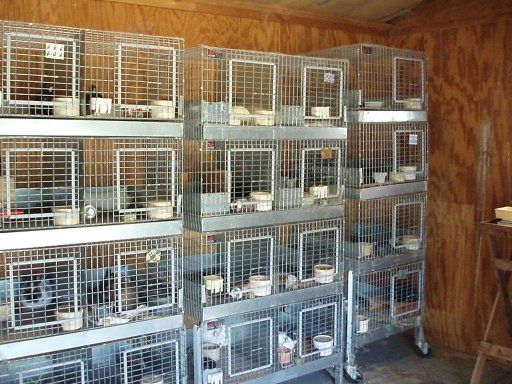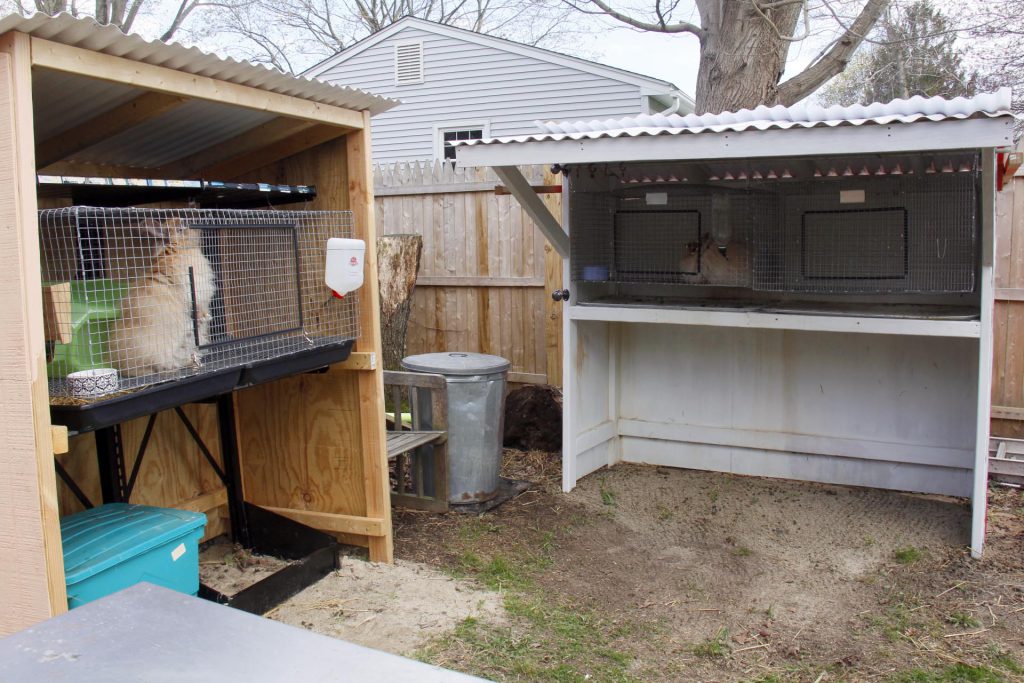
Rabbitry – Get All Information Here | Expert Guide
Rabbitry
The rabbitry may consist of a few odd hutches or a well-designed building or group of buildings in which have been built several hutches.
Floor layout must be carefully planned, for the ease of management depends largely upon correct grouping and spacing of hutches. Full consideration should be given to details of mailer expansion before the rabbitry is built,
for very often the rabbitry will be enlarged. It should be remembered that work in a badly designed rabbitry may easily take twice, or even three times, as long as the same work in one which is well designed.
There is also the question of the appearance of the rabbitry. Under the present law, embodied in the Allotments Act of195o, no Landlord may prohibit rabbit keeping unless, amongst other things, it constitutes a nuisance. It may well do, this if the appearance is bad and presents an ugly view to neighbors.

Information about rabbitry
There are several advantages and disadvantages of an indoor raid, i.e. hutches enclosed within a building. Stock will be completely protected from the weather, coats will not be faded by strong sunlight, winter breeding is probably a little easier, and losses of young during winter probably a little less.
Against these are the disadvantages that young should have some sunlight, the stock usually has slightly denser coats when kept outside, the mounted period may be slightly longer inside a building, and the initial cost of the building would be relatively high.
For these reasons, the most desirable system is often to be found in the stack of hutches with a shelter or extended roof Some arrangements must be made in the rabbitry for the storage of food, bedding, and equipment.
In all cases, the food and bedding store should be vermin-proof, and large bins of either metal or wood are ideal for some of the food. Storage space for roots is desirable inside, although clamps outside the rabbitry may answer the purpose adequately.
It is also important to have a suitable bench on which to handle stock. A very common arrangement in many rabbitries is that in which rows of hutches face each other. This saves much time especially if the width of the passageway between is sufficient for the easy passage of a trolley or small cart. The doors of the rabbitry must also be large enough to admit the largest barrow which is to be used, and if the floor level of the rabbitry is above that of the ground outside, then a ramp should be made to the rabbitry floor.

Probably most rabbitries are insufficiently lighted. The ideal system is the use of hopper type windows, (to assist in the control of ventilation,) situated between the level of the top of the hutches and the eaves. In large span buildings, additional roof lighting is often desirable, and the installation of electric light is usually found to be of the greatest benefit.
Windows should preferably face north or east so that strong light does not fade the coats of the stock, and when roof lighting is installed it may be necessary to have some form of blind to prevent this. The actual location of the hutches within a building is important.
The passages between stacks of hutches should be sufficiently wide. Stacks should not be placed tight against a wall, an air space of at least nine inches being desirable between the rear of the hutches and the wall. This allows free ventilation of the building and prevents dampness.
The floor of the rabbitry should be solid, impervious to rats anti mice, and easily cleaned. It should also be non-absorbent, non-slippery, durable and dry. A concrete floor is probably the best type if properly laid, that is a 2-inch thick layer of good concrete over 4 to 6 inches of well rammed coarse aggregate. The top layer of concrete can with advantage be re-inforced with a 2-inch mesh galvanized wire netting, which assists in preventing vermin from entering the rabbitry.
Earth floors and floors made from bricks absorb urine and are very difficult to clean and keep hygienic. The ease with which a good floor can be kept clean will quickly repay the initial extra cost. It is advantageous to have the floors toping slightly to a gutter to facilitate washing.
The rabbitry roof should be of such material that provides insulation both against cold and heat. A corrugated iron roof, unless it is laid over insulating material such as glass fiber mat, is bad for this reason. Corrugated asbestos is probably the most satisfactory material, but a wooden roof covered with a heavy quality roofing felt is as good though more expensive.

It is unusual except in a larger commercial undertaking for buildings to he specially constructed for a rabbitry. In general, existing buildings are more often adopted. Shelters are however another matter. They are much less costly to erect and much easier. The shelter may consist of an extension of the roof of the top hutch in a stack, or it may be dependent. For roofs extending more than about 2 feet, additional supports must be erected, and two feet do not provide adequate shelter, particularly for the attendant. Good protection is afforded by a shelter extended 4 feet from the hutches.
Attention to the comfort of the attendant is important, for sinless work can be carried out in reasonable comfort it may be scamp cd, particularly during the winter months when attention to detail is so important.
An ideal shelter may be made by extending the roof some four feet from the hutch. This roof must be supported by a framework consisting of x 21-inch timber resting on a heavier beam running parallel to the hutches. The heavy beam is supported by uprights at eight to ten feet intervals.

These uprights are ideally rested upon concrete footings. The roof must be anchored securely to the framework to prevent it’s being blown off by high winds. The use of corrugated asbestos gives added weight to the roof, and thus assists in preventing it from being blown off. Sometimes a light framework is fixed between the uprights, and wire netting attached to the framework, thus forming an enclosed rabbitry at a low cost. Sacking stretched over the wire netting also gives added protection.
It is common in America for the uprights of the shelter to be used for the support of hutches, a system that both cheapen the cost, and also allows complete clearance under the hutches.
